If you’re looking for a way to save some space in your bedroom, mounting your headboard to the wall is a great option. Not only does it free up floor space, but it can also add some visual interest to the room. This guide will walk you through the steps of how to mount a headboard to the wall. It will provide tips on what type of headboard to choose, as well as information on which tools and materials you’ll need for the job.
What is a Headboard for?
A headboard is a piece of furniture that attaches to the head of a bed. Headboards are usually used as decorative pieces and can be made from various materials, including wood, metal, upholstery, or even plastic. In some cases, they can also provide additional support for people sleeping in bed.
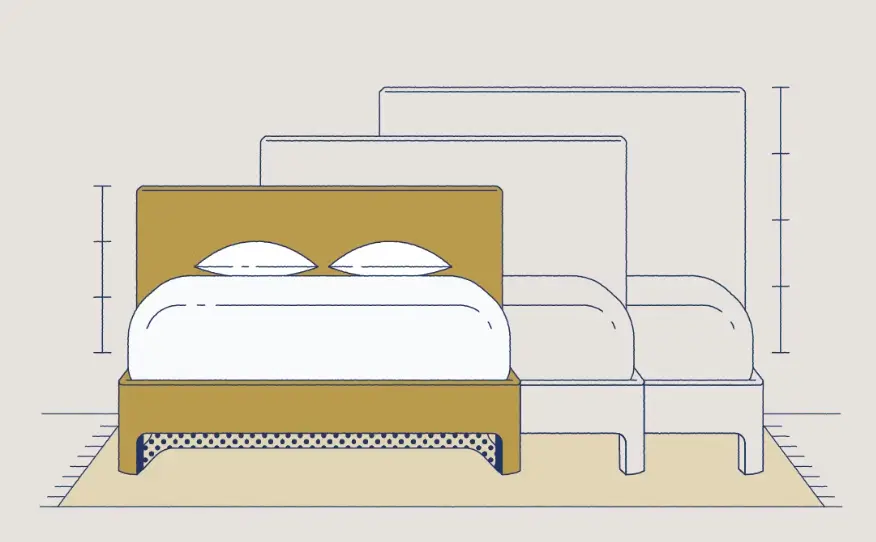
They may include built-in storage space such as shelves or drawers, giving them practicality beyond their aesthetic appeal. Some headboards have lights incorporated into them as well.
Headboards can be purchased in a wide range of styles and finishes to suit any bedroom decor. They often come with matching footboards and side rails to complete the look. They are available at department stores, home improvement stores, online retailers, and even custom-made. When choosing a headboard, consider size, style, and materials to ensure it meets your needs and complements the rest of your bedroom decor.
No matter what type of headboard you choose, it can help make your bedroom look more inviting and complete. From rustic wood to sleek metal designs, there is something for everyone’s taste and budget. Headboards are an easy way to add character and charm to any bedroom [1]!
Different Ways to Install a Headboard
Wall Mounted
One of the most popular ways to install a headboard is by mounting it directly onto the wall. This type of installation can be done with either brackets or screws and anchors. By using brackets, you will be able to easily adjust your headboard’s height and angle for maximum comfort. When mounting this way, make sure that you use the correct screws and anchors based on your specific wall material.
Bed Frame Mounted
The other option for installing a headboard is to mount it directly onto the bed frame. Again, this type of installation requires either brackets or screws and anchors, depending on your bed frame type. Different types of headboards are designed differently so make sure you read the instructions carefully before beginning the project. Additionally, make sure to use the appropriate screws and anchors for a secure hold.
Floating
For those who don’t want to mount their headboard directly onto the wall or bed frame, a floating option is available. This type of installation requires mounting brackets that attach your headboard to the wall but keep it elevated above the floor. The floating effect gives your bedroom an open and airy feel, as well as allows you to adjust the height and angle of your headboard for extra comfort. Make sure to read all instructions carefully before beginning this project.
Freestanding
The fourth and final headboard installation option is a freestanding unit. This type of headboard does not require any attachment to the wall or bed frame, as it stands on its own. All you have to do is simply set it in place and adjust the height and angle for maximum comfort. Make sure that your floor is level before setting up your freestanding headboard, as an uneven surface could cause your headboard to wobble or become unstable [2].
5 steps to install a wall-mounted headboard
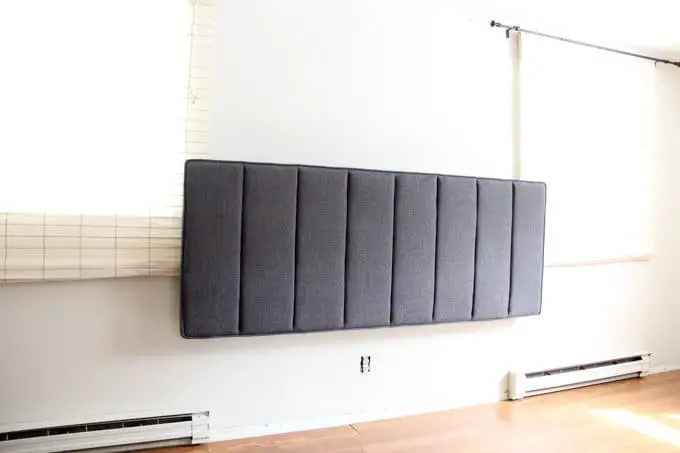
Measure your wall-mounted headboard
The first step in installing a wall-mounted headboard is to measure the size of the headboard to ensure an accurate fit. Measure both the width and height of your wall-mounted headboard, making sure to record those measurements accurately.
Wall studs? Then find them
Once you have the measurements of your headboard, it’s time to locate the wall studs. You need to locate the studs to ensure that you mount your headboard securely and safely. Stud finders are great tools for finding where the wall studs are located. If a stud finder is not available, try tapping on the wall with a hammer or screwdriver until you hear a solid sound which indicates that there is an object behind the drywall.
Prepare your tools
This includes gathering all necessary materials such as screws, anchors, and other mounting hardware that comes with the headboard. It also includes gathering tools such as a drill, level, stud finder, and measuring tape.
Prepare your wall
For the installation to be successful it is important to prepare your walls correctly. Make note of where any electrical outlets or light switches may be located so that they can be avoided during installation. If you are going through drywall, you’ll need to use anchors. For heavier headboards, use a toggle bolt instead of an anchor.
Place your fittings
Line up the headboard with the wall studs, making sure that it is level. Then attach the fittings to the back of the headboard and secure them with screws or bolts depending on what type of hardware was supplied with your headboard. Finally, mount your headboard by screwing or bolting it into place.
Mount the headboard
Once everything is prepared and measured correctly it is time to mount the headboard onto the wall.
Start by positioning your headboard at the desired location and make sure that it is level with a leveler or ruler. Mark where each screw needs to go so that you can drill them into place. Securely fasten screws or bolts into the wall studs to ensure that your headboard stays in place. Make sure all mounting hardware is tightened properly and securely before hanging any decorative items on your new wall-mounted headboard.
Enjoy your wall-mounted headboard
Once the installation is complete, you can enjoy your newly installed wall-mounted headboard. If done properly, it should stay securely in place for many years to come! Have fun styling and decorating your new feature piece to create a unique look that reflects your personality and style [3].
How to choose your wall headboard?
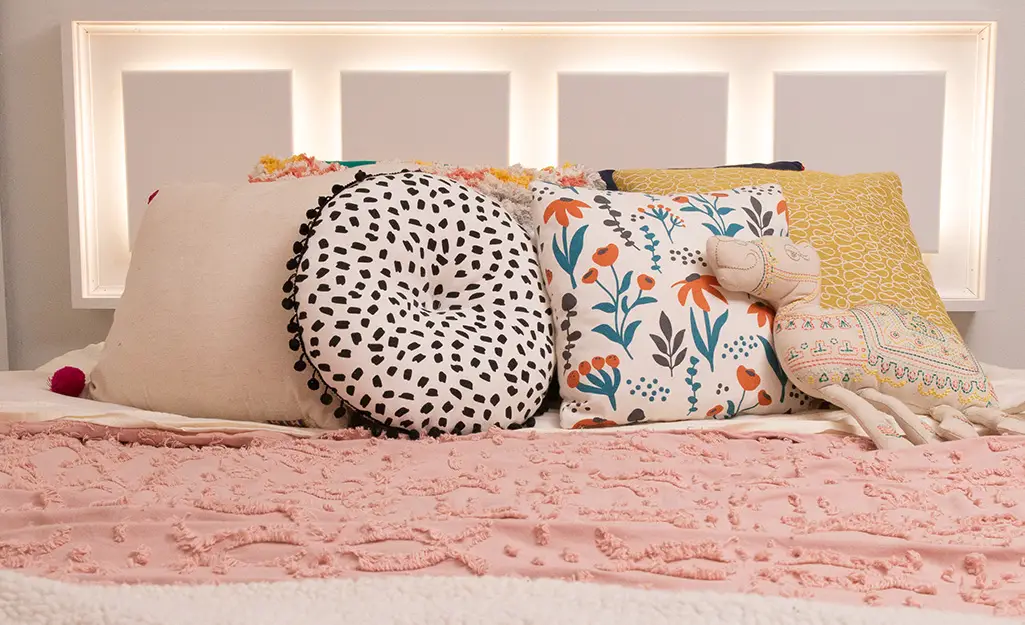
Wall headboards come in a variety of shapes and sizes -from full-sized, tufted pieces to small and simple designs. When it comes to choosing the best one for your bedroom, there is no one-size-fits-all formula. Here are some tips to bear in mind while browsing options:
- Consider Your Space: Wall headboards can take up quite a bit of space. Before choosing a design, measure your bedroom walls and make sure you have enough room for the desired look. You should also consider how much visual impact you want your wall headboard to have. A smaller piece may be more subtle but still bring personality into the room.
- Think about Comfort: Many wall headboards are made with padding and upholstery, so when shopping for one you should think about how comfortable it will feel. If possible, sit in the headboard to get a better idea of its comfort level.
- Choose Durable Materials: Look for wall headboards that are constructed with durable materials such as wood, metal or composite boards. These types of materials will be more resistant to wear and tear than other options like fabric or foam. It’s also important to select fabrics that are fade-resistant and easy to clean if you’re opting for an upholstered look.
- Pick a Color Palette: Wall headboards come in a variety of colors and patterns – from soft pastels to bold prints. Narrow down your choices by picking a color palette that compliments the rest of your bedroom decor. This will help ensure that the wall headboard blends in well with the other elements of the room.
- Research Different Styles: Wall headboards come in a variety of styles, from traditional to modern and everything in between. Spend some time researching different designs so you can decide which is right for you. Once you’ve narrowed down your choices, it’s time to start shopping around for the best price.
The right wall headboard can transform any bedroom into a cozy and inviting space; so take your time choosing one that suits both your style and budget! With careful consideration and research, you’ll find the perfect piece to complete your bedroom makeover.
How to maintain a wall headboard?
Before you start maintaining a wall headboard it is important to know the type of material used to construct it. If your wall headboard is made of wood, avoid using any harsh chemical cleaners or abrasive tools as they can damage and discolor the wood. Here are some tips for maintaining a wall headboard:
- Vacuum lightly with an upholstery attachment every few weeks to remove dust and debris from fabric-covered headboards.
- Spot-clean any spills with a damp cloth immediately after they occur, followed by a dry cloth to absorb any moisture left behind.
- Use a soft brush attachment on a vacuum cleaner to remove large particles of dirt from crevices in fabric-covered headboards.
- Wipe down wooden headboards with a mild soap and water solution, then dry the surface with a clean cloth.
- Polish wood headboards regularly with furniture polish to protect them from damage and maintain their shine.
- Check all screws and bolts on wooden headboard frames periodically to make sure they are tight and secure.
- Avoid placing heavy items like books or lamps on top of wall headboards as this may cause them to become unbalanced over time.
- Keep curtains or drapes away from wall headboards that are made of wood as the moisture can cause warping or discoloration of the wood material over time.
- Keep heat sources away from the wall headboard to prevent the warping or cracking of wood.
- Inspect the wall headboard regularly for signs of wear and tear and take the necessary steps to repair it promptly.
Following these tips will help you maintain your wall headboard in good condition for a long time.
Popular wall-mounted headboard designs
Wall-mounted headboards are a popular choice for many bedrooms and come in a variety of styles to choose from. Some of the most popular wall-mounted designs include:
- Sleigh headboard – This classic style is both timeless and elegant, with curved edges and simple lines. It can be customized with upholstery or tufting or left plain for a sleek look.
- Quilted headboard – Great for adding texture to the bedroom, this type of headboard typically has padded squares that create an eye-catching quilted pattern. Upholstered fabric is also often used to cover the panels.
- Panel headboard – An iconic style seen in many homes, this type of headboard consists of a panel with either molding or beading and is usually made from wood or metal.
- Canopy headboard – This luxurious design adds a touch of elegance to any bedroom, as it features four vertical posts that form an arch around the bed. The posts can be topped with fabric for additional comfort and style.
- Tufted headboard – A traditional tufted headboard gives the bedroom a classic look and offers a degree of sophistication. It is typically upholstered in fabric and has buttons that create a diamond-shaped pattern.
- Geometric headboard – For those looking to add some visual interest to their space, this type of wall-mounted headboard features bold geometric shapes like squares, rectangles, and circles. It is usually made of wood or metal and can be painted to match the other décor in the room.
It is also possible to decorate a headboard with wallpaper or even create a unique design with fabric to add an extra element of personalization. No matter what style you choose, wall-mounted headboards are a great way to add a touch of class and comfort to your bedroom. Whether you opt for a classic traditional look or something more modern, these designs will help make your space feel inviting and comfortable.
Benefits of Wall-Mounted Headboards
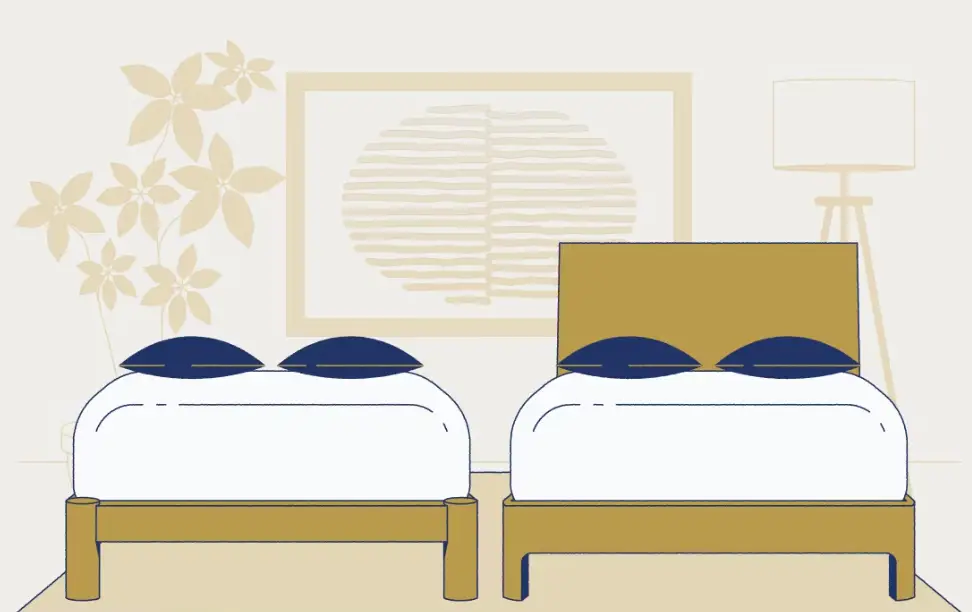
In addition to being aesthetically pleasing, there are several benefits associated with wall-mounted headboards:
- They can help to maximize space in a small room by creating a focal point on the wall that isn’t taking up valuable floor space.
- Many designs require minimal assembly and installation, making them a great choice for DIYers.
- Wall-mounted headboards are usually quite lightweight and easy to move around if necessary.
- They can help to reduce noise in the bedroom by absorbing sound.
- Wall-mounted headboards are often very versatile and can be easily switched out when you want to change up the look of your room.
- Whether you’re looking for something classic or modern, wall-mounted headboards offer a great way to bring both style and comfort into your bedroom. With so many designs to choose from, you’ll be sure to find one that fits your tastes [4].
FAQ
How do you anchor a heavy headboard to the wall?
The best way to anchor a heavy headboard to the wall is to use appropriate wall anchors and screws.
Check with your local hardware store for the right type of anchors and screws needed for your specific headboard. You should also make sure that you mark the correct locations on the wall where each screw will be inserted, as this will ensure an even and secure attachment. Make sure that all anchors are securely in place before driving in any screws. Finally, check your headboard periodically over time to make sure it remains securely fastened to the wall.
What is a good height for a headboard?
The ideal height for a headboard depends largely on personal preference and how you plan on using it. If you plan on sitting up and reading in bed, a taller headboard will be more comfortable. For those who want to lean against the headboard while in bed, a shorter one would work best. Generally speaking, a headboard should be between 121 cm and 137 cm tall.
Does the size of my headboard matter?
The size of your headboard does matter because it affects how much impact it has on your bedroom’s design. If you have a small room, then smaller-sized headboards with minimal details may suit the space better than oversized ones with bold features. On the other hand, if you have a large master bedroom, then bigger and more intricate designs can help create an elegant and inviting look. It is important to consider the size of your bedroom when selecting a headboard for it.
What is the best way to clean a headboard?
The best way to clean a headboard is by using a vacuum or a soft-bristled brush attachment. Start at the top of the headboard and work your way down, gradually removing dust and debris with each pass. Avoid harsh chemicals or abrasive materials, as these can damage the material over time. For tougher stains, you can use mild soap and warm water on a damp cloth but make sure to spot-test it in an inconspicuous area first. Finally, wipe off excess moisture with a soft, dry cloth before allowing your headboard to dry completely.
How do you support a freestanding headboard?
Freestanding headboards are best supported with a bed frame and mattress. If your bed does not have a bed frame, you can use heavy-duty wall brackets or furniture straps to secure the headboard to the wall. Alternatively, you can also buy adjustable legs or feet that come with the most freestanding headboards which can be used for added stability and support.
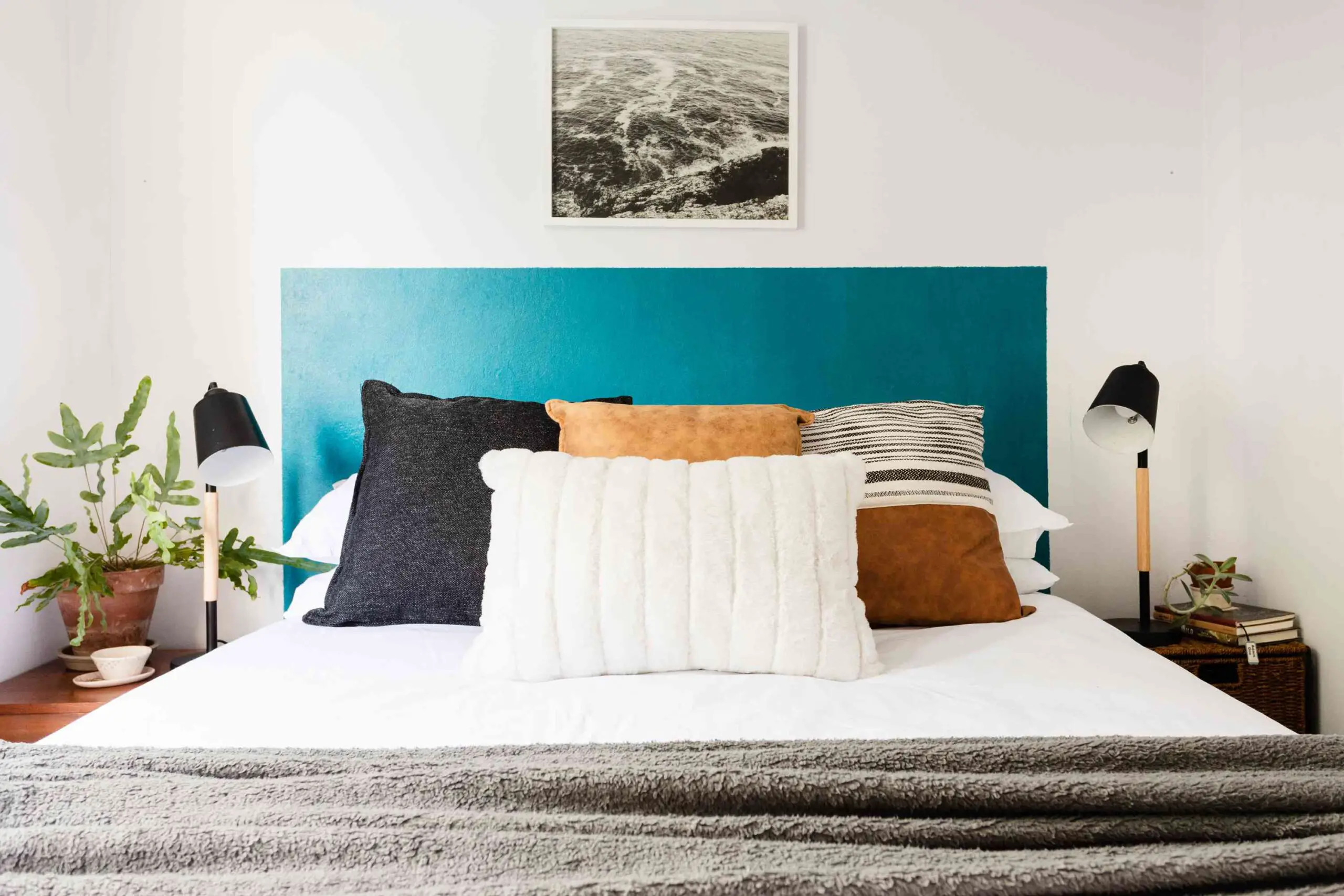
Make sure to check the manufacturer’s instructions for more information about how to properly assemble and install your specific type of headboard.
Do I need special tools to install a headboard?
No, in most cases you will only need basic hand tools such as a drill and screwdriver. However, if your headboard requires additional components such as wall anchors or brackets, you may need additional tools such as a hammer or level. Again, check with the manufacturer for more information about what tools and materials are needed to install your specific headboard.
How are headboards attached?
Headboards are typically attached to the wall using screws and wall anchors. If your headboard is a freestanding model, you may need additional components such as adjustable feet or furniture straps to secure it properly. Again, make sure to check with the manufacturer for more information about what is needed to assemble and install your specific kind of headboard.
Can I hang my headboard on a bed frame?
Yes, you can hang your headboard on a bed frame as long as it has enough space between the posts and other components for the hardware that comes with the headboard. Most beds designed for this type of setup will come with pre-drilled holes or slots where you can attach the hardware from your headboard. If your bed does not have these holes, you can usually still attach the headboard using a special frame-adaptor kit.
What materials are headboards made from?
Headboards can be made from many different materials including wood, metal, fabric, and upholstery.
Each material has its unique benefits and drawbacks so it is important to consider things like durability, design style, maintenance requirements, and cost when shopping for a headboard. Additionally, some materials may require more labor or tools to assemble than others so make sure you check with the manufacturer for more information about what is needed for installation before purchasing.
Are there any safety concerns I should know about?
Yes. Any time you are working with tools or mounting items to the wall, it is important to use proper safety precautions. Make sure you read the instructions and follow all safety guidelines when assembling and installing your headboard. Additionally, if you have small children or pets in your home, take extra caution to secure any loose parts or sharp edges that may be present. Finally, make sure that the bed frame or other supporting structure is stable enough to support the weight of the headboard before completing installation.
Can I refinish my headboard?
Yes, depending on what material it is made from you can usually refinish your headboard. However, some materials such as fabric and upholstery may not be suitable for this type of task. Consult with a professional if you have any questions about refinishing your headboard.
How do you stabilize a headboard?
There are several ways to stabilize a headboard, such as using furniture straps or wall brackets. If your headboard is a freestanding model, you may need additional components such as adjustable feet or furniture straps to secure it properly. Additionally, some bed frames come with pre-drilled holes that allow for easy installation of the hardware from your headboard. Lastly, make sure that the bed frame or other supporting structure is stable enough to support the weight of the headboard before completing installation.
Can I use a headboard for something other than my bed?
Yes! Headboards can be used in many different ways and are not just limited to being used on beds. For example, they can be hung up on walls or used as room dividers. However, you should always check with the manufacturer to make sure that your headboard is suitable for your specific application before buying.
Should a headboard sit on the mattress?
It is not recommended that a headboard sits on the mattress, as this can cause the mattress to become unstable. Instead, you should use bed frame risers or furniture straps to ensure that the headboard is secure and stable. Additionally, make sure that the bed frame or other supporting structure is strong enough to support the weight of the headboard before completing installation.
How high should a headboard be above the mattress?
The height of the headboard is determined by personal preference, but typically it should be between 91 to 152 cm above the mattress. It is important to make sure that the headboard is not too close or too far away from the bed so as not to impede movement in and out of the bed. Additionally, if you have small children or pets in your home, consider mounting the headboard slightly lower for added safety.
Are there any special considerations for a king-sized bed?
Yes. King-sized beds require larger headboards and often need an extra support structure such as a metal frame or wall brackets. Additionally, you may need additional components such as adjustable feet or furniture straps to secure it properly. Make sure that the bed frame or other supporting structure is stable enough to support the weight of the headboard before completing installation.
How do I stop my frame-mounted headboard from moving?
To stop a frame-mounted headboard from moving, you can use furniture straps or wall brackets. Additionally, some bed frames come with pre-drilled holes that allow for easy installation of the hardware from your headboard. Finally, make sure that the bed frame or other supporting structure is stable enough to support the weight of the headboard before completing installation.
What can I use instead of a headboard?
If you don’t want to use a traditional headboard, there are many other options available. You can opt for wall decals, a decorative banner, or even an upholstered wall panel. Additionally, some people like to hang art above the bed in lieu of a headboard. Finally, you could use furniture straps or wall brackets to secure your mattress directly to the wall instead of using a headboard. Whichever option you choose, make sure that the bed frame or other supporting structure is stable enough to support the weight before completing installation.
Useful Video: Wall Mounted Headboards are the Best and Easiest Way to Add Style to You Bedroom – Lamps Plus
Conclusion
To mount a headboard successfully, you must ensure the wall is properly prepared and the measurements are precise. After gathering all of your supplies, use a drill to attach the headboard brackets to the wall and bed frame. Finally, you should test it out by pushing against the headboard; if it feels sturdy, then your job is finished! With just a few steps and some basic tools, anyone can install a headboard in their bedroom with ease. By following these simple instructions, you can give your room an updated look quickly and effectively.
References
- https://mattresswarehouse.com/blogs/sleep-news-and-tips/is-a-headboard-necessary
- https://amerisleep.com/blog/how-to-install-a-headboard/
- https://magnabeds.com/blog/news/how-to-install-a-wall-mounted-headboard
- https://casper.com/blog/do-you-need-headboard/





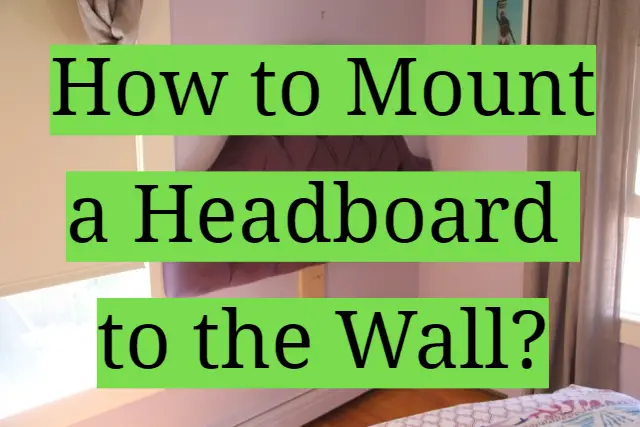








Leave a Reply